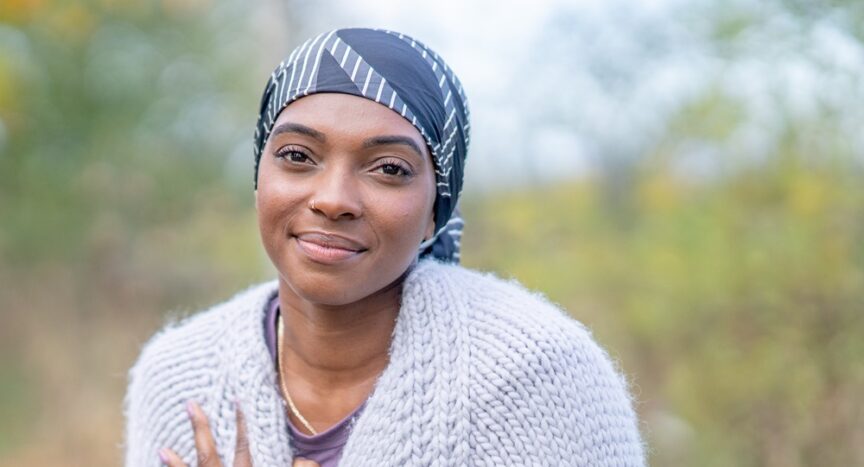Historically, cancer has been associated with aging. The median age of a cancer diagnosis is 66, and the risk of cancer increases with age. Yet, data from the American Cancer Society (ACS) reveals an alarming trend: The incidence of cancer among people under 50 around the world is projected to increase by 31% in 2030.

Across the U.S., early-onset cancer — defined as a disease occurring between ages 18 and 49 — is on the rise for cancers of the uterus, colon and rectum, breast, pancreas, stomach, kidney and cervix. The surge has cancer researchers like myself — as well as health care providers — concerned, especially because cancer in younger people tends to be more aggressive.
Though this trend is unsettling, it’s encouraging to see innovations in cancer care today that are improving outcomes and making many cancers not only treatable but, in some cases, preventable. Taking proactive steps for your health — such as getting routine cancer screenings and understanding your risk factors, including family history and making positive lifestyle choices — is critical to set yourself up for the best outcome if faced with a cancer diagnosis.
Why Are People Getting Diagnosed with Cancer Earlier?
This rise in cancer rates among younger adults is linked to several possible causes, including access to better screening. However, there is growing evidence indicating environmental factors may also contribute to early-onset cancers.
Particularly hard hit in this cancer surge among younger people is the Black community and other communities of color, such as the Latinx community.

According to a recent report from the U.S. Office of Minority Health, part of the Department of Health and Human Services, Black people have the highest mortality rate of any racial and ethnic group for all cancers combined and for most major cancers. And cancer rates are rising in young Black people, especially for colorectal and breast cancer.
Compounding the issue, people of color have higher incidence rates for cancers caused by infection, such as HPV-related cervical cancer, than white people. Additionally, Black individuals are the least likely of all racial groups to receive an early-stage diagnosis for cancers that have recommended screening tests, according to the ACS.
The root causes of cancer health disparities in this population are complex and intertwined with systemic racism in healthcare, which significantly impacts health outcomes. Contributing factors include genetic susceptibility, family history, chronic stress (which can weaken immune function), exposure to environmental toxins and limited access to healthy foods. Systemic barriers in healthcare, such as reduced access to preventive care, delays in diagnosis and treatment, and disparities in high-quality care, further exacerbate poorer health outcomes for young Black individuals.
Some progress toward closing this health gap has been made. In 1990, the cancer death rate for Black people was 33% higher than for white people. In 2016, it decreased to 16%. An improvement, yes — but still a huge discrepancy.
Are There Certain Cancers That Disproportionately Impact People of Color?
In Black populations, early-onset colorectal cancer accounts for almost 10% of all new cases. Black individuals are more likely than white individuals to be diagnosed with the disease at a younger age and at a more advanced stage.
Black men have a significantly higher risk of being diagnosed with certain cancers compared to white men, including prostate and stomach cancer. With this, they are twice as likely to die from prostate cancer and 2.5 times more likely to die from stomach cancer than white men.
The ACS report further states that Black women are 40% more likely to die from breast cancer than white women, and they also have the highest death rates from uterine cancer. They are twice as likely to be diagnosed with stomach cancer, and 2.3 times more likely to die from it.

In addition, Black women are at higher risk of getting breast cancer at a young age. Early-onset breast cancer tends to have more aggressive tumor profiles. My colleague Lindsey Treviño, Ph.D., assistant professor in the Division of Health Equities at City of Hope, has performed studies that show that endocrine-disrupting chemicals called parabens, often found in beauty products including haircare products, makeup, lotions, shower cleansers and scrubs marketed to Black women, have an outside effect on breast cancer risk.
My colleague Loretta Erhunmwunsee, M.D., a City of Hope associate professor in the divisions of thoracic surgery and health equity, has studied the effect of environmental carcinogens on Black populations extensively. Her research has shown that air pollution exposure, neighborhood deprivation and socioeconomic status are a strong predictor of aggressive biology, elevated risk, and lower survival in patients with non-small cell lung cancer.
What Should I Do Now?
Despite these statistics, Black people of all ages can significantly lower their risk of cancer by being proactive about their health and making positive choices. Some of these changes are small lifestyle adjustments that can have a big impact, such as not smoking, eating a healthy diet, getting regular physical activity and maintaining a healthy weight and limiting alcohol consumption.
Getting regular cancer screenings is an absolute must. Here at City of Hope, we often say, “the best cancer treatment is prevention.” This includes colonoscopies to check for colorectal cancer starting at age 45, mammograms to screen for breast cancer starting at age 40, regular Pap smears for women and, for men, having individualized discussions with your doctor about when to start prostate cancer screening. Those with a smoking history may be eligible for lung cancer screening.

If you are diagnosed with cancer, it is important to know that where you get treatment matters. Studies have shown that patients who receive care at one of the 58 National Cancer Institute-designated comprehensive cancer centers in the U.S., like City of Hope, have better outcomes. Because of its potentially deadly nature, cancer care is different, and all patients deserve the best treatment for their circumstances.
For complex, advanced or unusual cases, please remember that there can be advantages to participating in a clinical trial. Every breakthrough cancer treatment, from chemotherapy to immunotherapy like CAR T cell therapy, began as a clinical trial. In a trial, you have access to what are potentially the latest and greatest treatment options.
The numbers can be troubling. But if you are proactive about your health, you have the power to avoid being another cancer statistic, no matter your age or the color of your skin.
John D. Carpten, Ph.D., is director of the National Cancer Institute-designated City of Hope Comprehensive Cancer Center, director of the Beckman Research Institute of City of Hope, and chief scientific officer.





